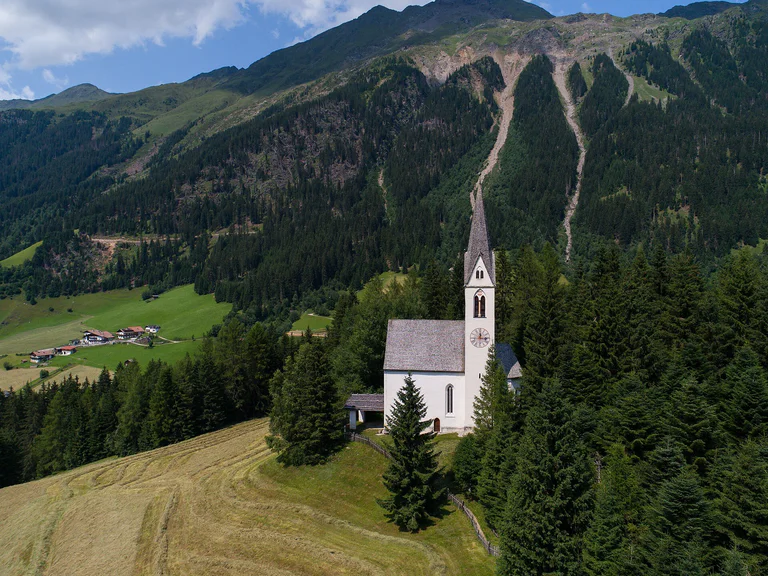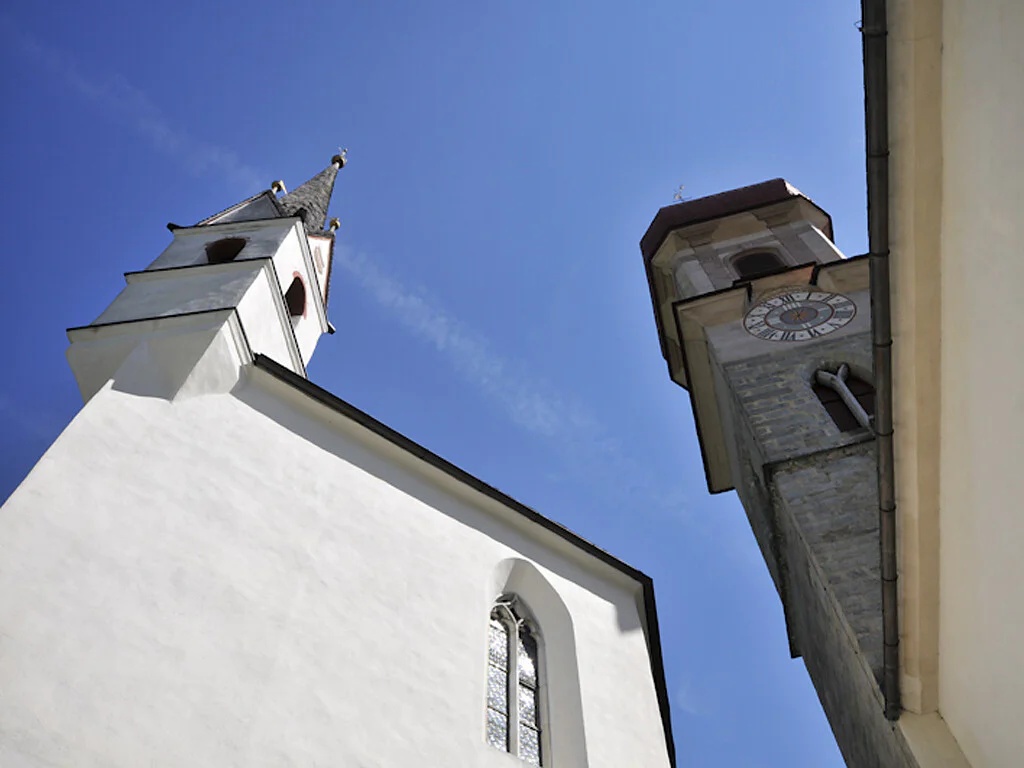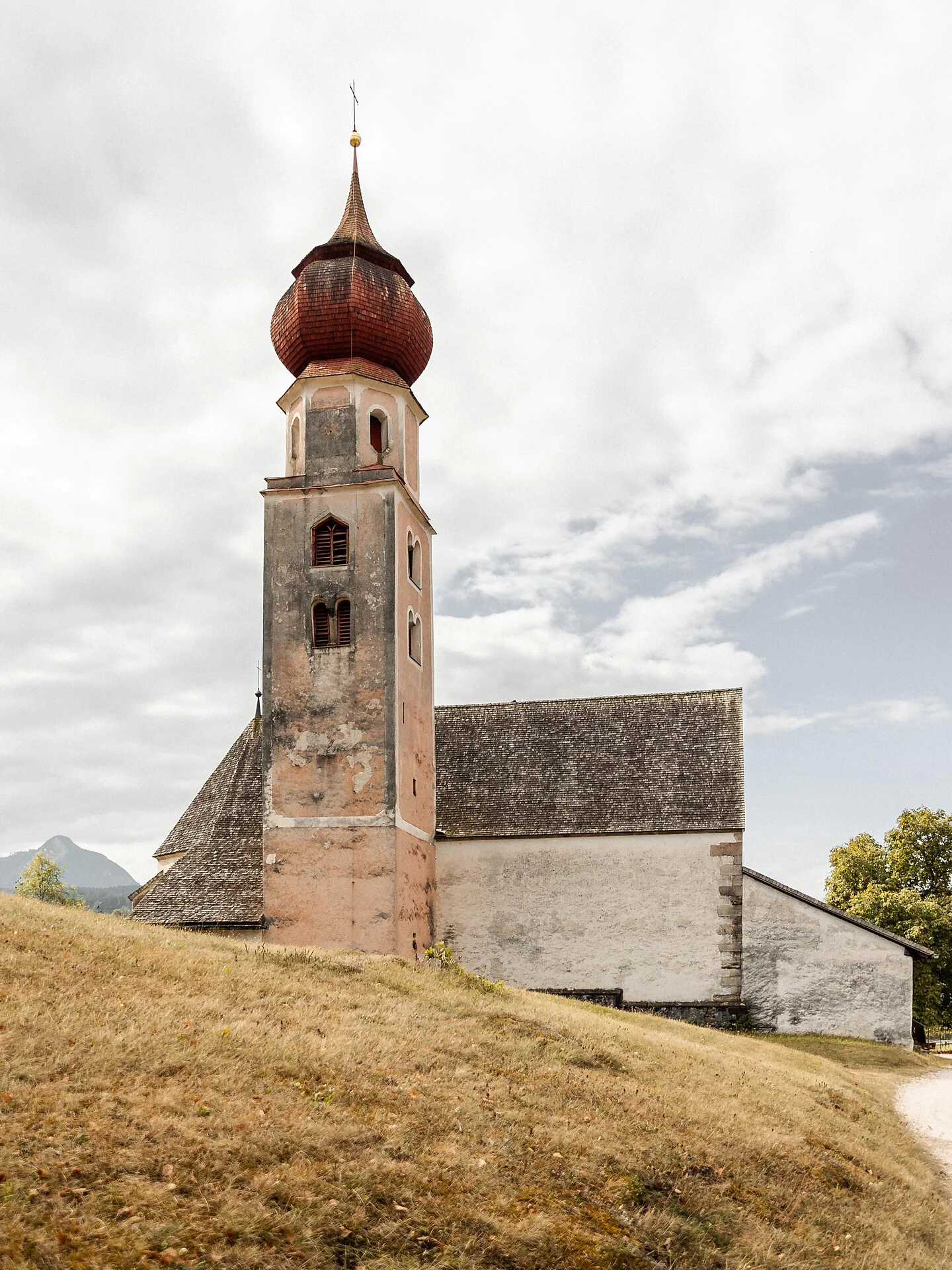This church in Gufidaun originates from the 15th century. The cultivated vestry, also called Koburger chapel, contains a noteworthy fresco cycle of the Ambrosius Gander from the valley "Jaufental". Holy Mass: Saturday at 18:00 clock and Sunday at 9:00 clock (german)





































































